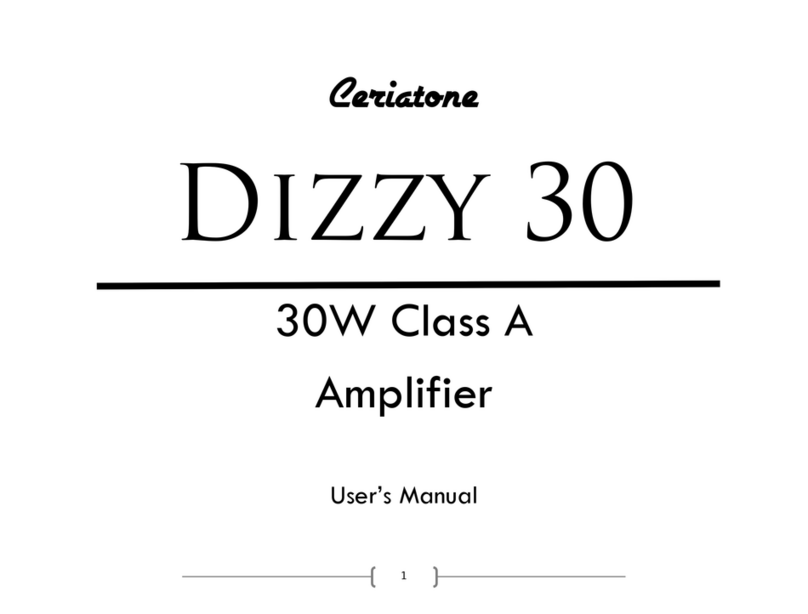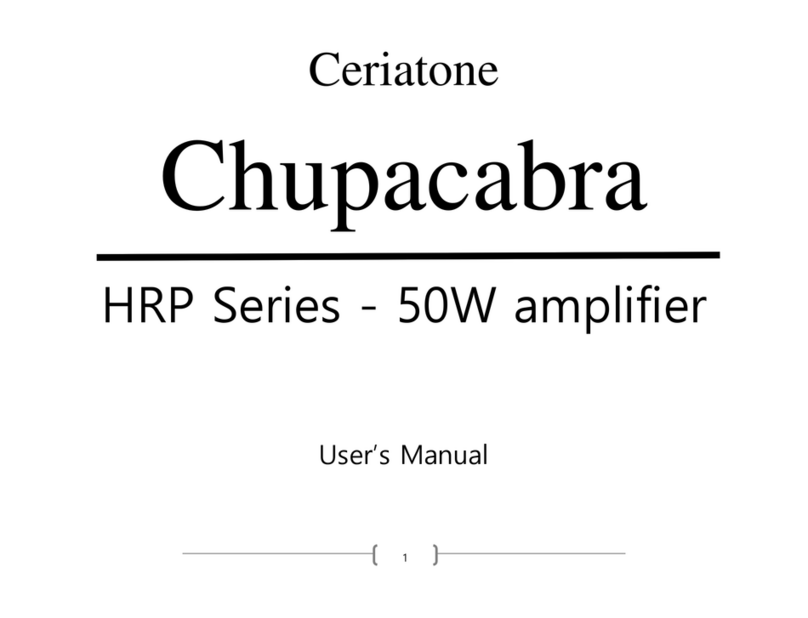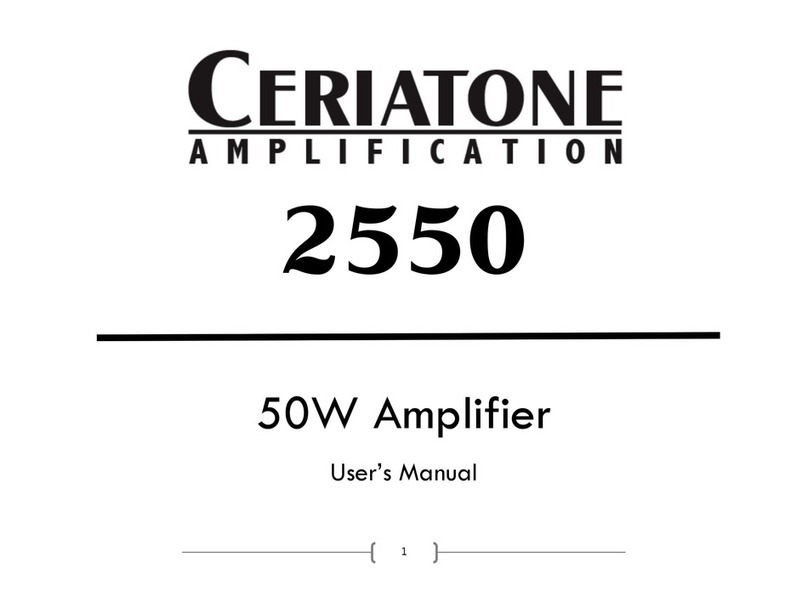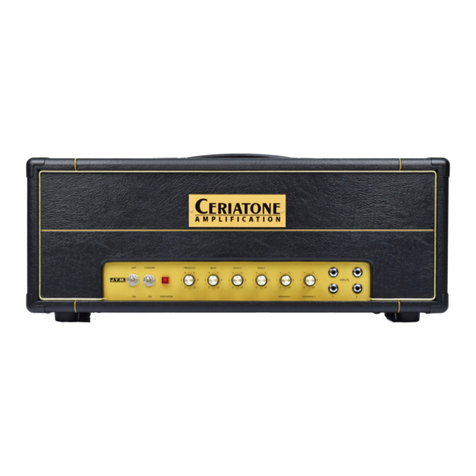To measure your power tube bias, carefully follow these steps with the amplifier in OPERATE, MASTER at minimum, and
connected to a speaker load (not doing so may damage your amplifier!):
1) Turn on a digital multimeter (DMM), and set it to read millivolts (mV) in the 100mV range (this will vary from DMM to
DMM)
2) Plug a black probe into the color-coded jack on your DMM, and do the same for a red probe
3) Plug the black probe tip into the COM multimeter jack on the rear of the amp
4) Plug the red probe tip into the LEFT BIAS multimeter jack on the rear of the amp. This measures bias for the KT66
closest to V3. Right down the value your DMM reads. You might expect a value between 30mV-40mV.
5) Repeat for the other power tube position by plugging your red probe into the RIGHT BIAS multimeter jack.
Okay, now I’ve measured my bias. Now what?
To calculate bias, there are two pieces of information you need to know: your amplifier’s power tube plate voltage, and the
published value for maximum plate dissipation for the power tubes used in your amplifier. To save you some time and energy,
here are those two values:
-Approximate plate voltage for JTM45 amplifiers = 420VDC
-Maximum plate dissipation for KT66s = 25W
…and now some math. The formula for calculating bias is as follows:
𝑚𝑎𝑥𝑖𝑚𝑢𝑚 𝑝𝑙𝑎𝑡𝑒 𝑑𝑖𝑠𝑠𝑖𝑝𝑎𝑡𝑖𝑜𝑛
𝑎𝑚𝑝𝑙𝑖𝑓𝑖𝑒𝑟 𝑝𝑙𝑎𝑡𝑒 𝑣𝑜𝑙𝑡𝑎𝑔𝑒 × 𝑝𝑒𝑟𝑐𝑒𝑛𝑡 𝑜𝑓 𝑚𝑎𝑥𝑖𝑚𝑢𝑚 𝑑𝑖𝑠𝑠𝑖𝑝𝑎𝑡𝑖𝑜𝑛 × 1000 =𝑏𝑖𝑎𝑠 𝑐𝑢𝑟𝑟𝑒𝑛𝑡 (𝑚𝐴)
In most cases, amplifiers are biased between 50% and 75% dissipation. We bias the JTM45 to 35mV reading on a DMM.



































